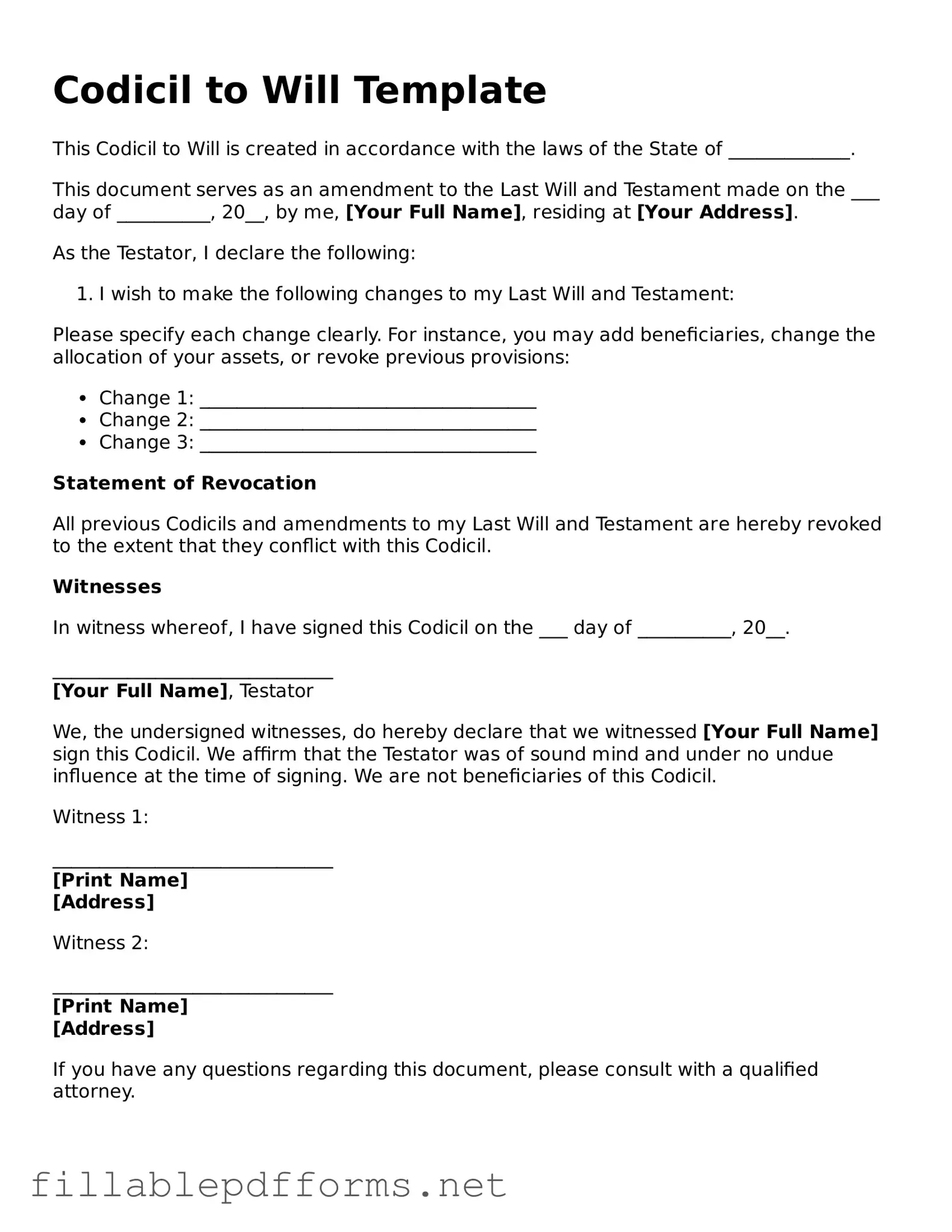When it comes to estate planning, ensuring that your wishes are accurately reflected in your will is essential. A Codicil to Will form serves as a valuable tool for individuals looking to make modifications or updates to their existing wills without the need to create an entirely new document. This form allows for the addition, deletion, or alteration of specific provisions within the original will, ensuring that changes can be made efficiently and legally. It is important to note that a codicil must be executed with the same formalities as a will, including proper signing and witnessing, to ensure its validity. Additionally, understanding the implications of the changes made through a codicil is crucial, as they can affect the distribution of assets and the roles of executors or guardians. By using a codicil, individuals can maintain control over their estate plans while adapting to changing circumstances, such as the birth of a child, marriage, divorce, or changes in financial status.
